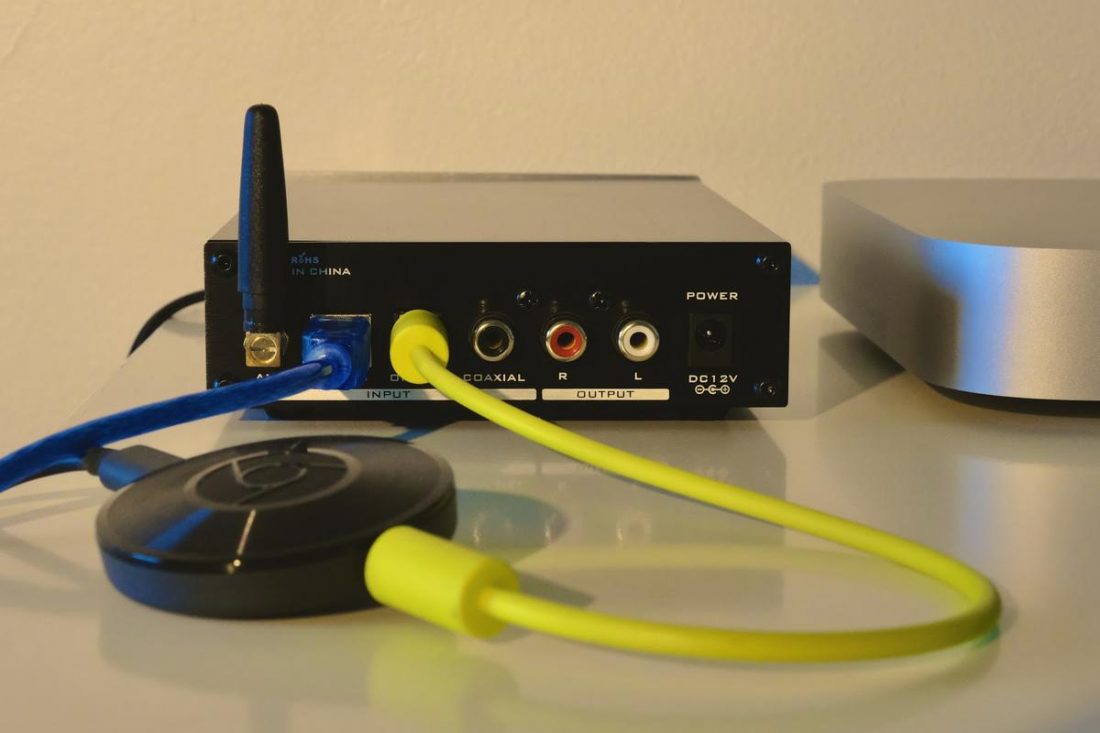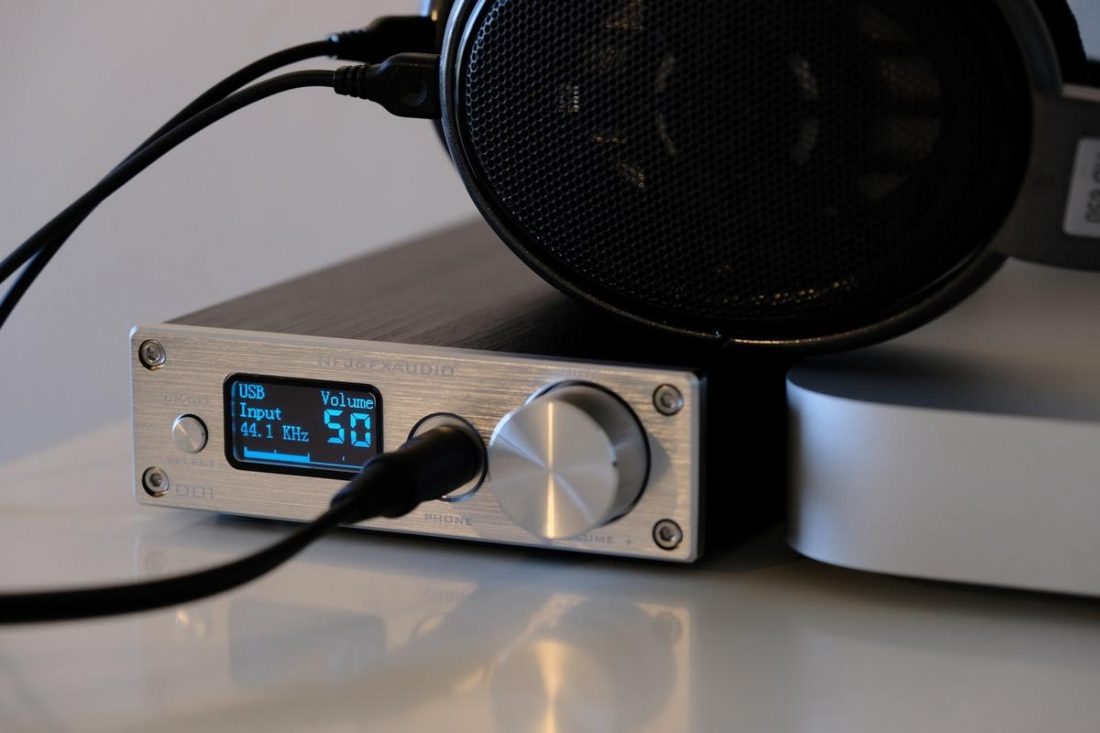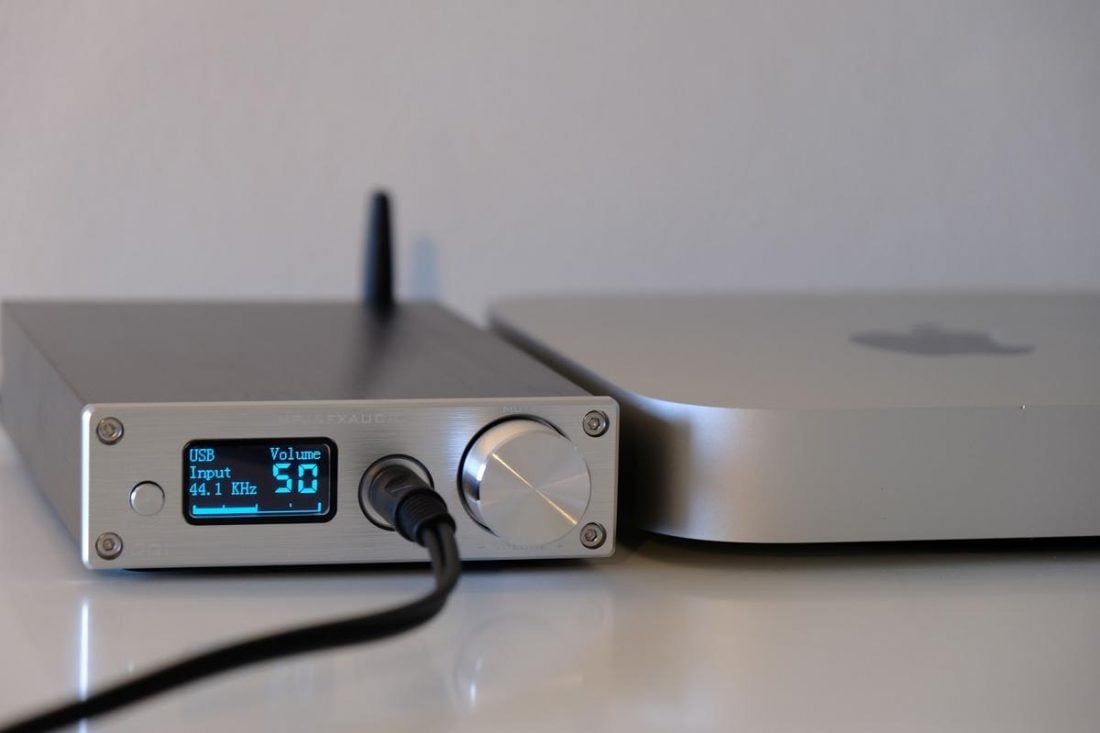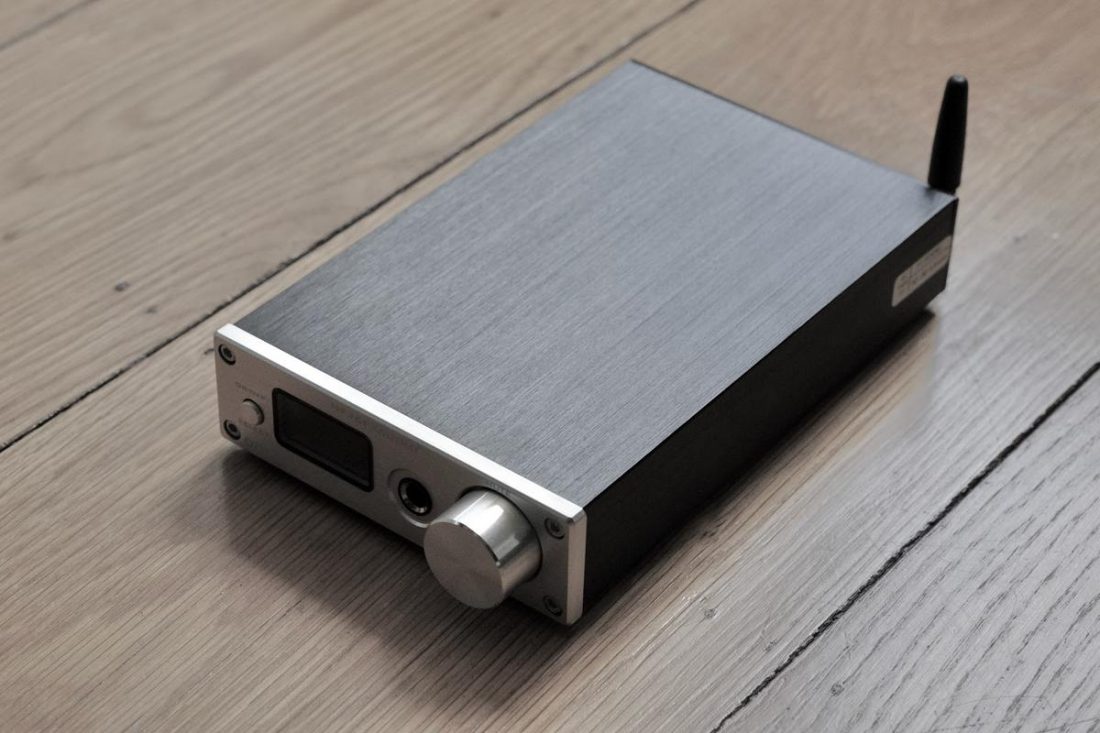Adding boxes upon boxes is easy, and if you’re a devotee to Hi-Fi separates, it can be fun to build your perfect system this way, switching out components as your tastes evolve. But what if space is a consideration? What if you prefer the path of the minimalist? Fortunately, there are some great sounding all-in-one solutions at multiple price points, and in this review, I’m looking at a fine desktop DAC/amp that packs a lot into a compact package.
Company Overview
Based in Shenzhen, China, FX Audio is a brand name of Fydea Technology Company formed in 2006. The company is focused on the R&D and manufacture of a range of DACs, amplifiers, and other products. They seek to differentiate themselves in the market by pursuing a philosophy of solid customer service and great value.
Technical Specifications
Form: Desktop DAC/amp Frequency Response: 20Hz-20kHz Headphone Output Power: 400mW x 2 @ 32Ohms, 90mW x 2 @ 300Ohms THD+N: 0.004% @ 1kHz PCM Decoding: 32Bit/768kHz (USB), 24Bit/192kHz (COAX/Optical), 24Bit/96kHz (Bluetooth) DSD Decoding: DSD512 (USB) Source Inputs: USB-B (cable included), Optical, Coax, Bluetooth v5.0 Outputs: 6.35mm (¼”) Headphone jack, RCA line out Dimensions: 11.4 x 17.8 x 3.3 cm Weight: 0.47Kg
Packaging
It’s immediately obvious that FX Audio chose to focus their costs on the unit itself, and not on extras. The packaging protects the unit well, but is otherwise unremarkable. A simple cardboard box and foam packaging is all you get here.
In the box
The DAC/amp 100-240v power brick with a localized plug USB cable Bluetooth antenna Instructions
Design
The D01 comes in black or silver finishes, both with a brushed aluminum face plate. As mentioned, edges are sharp, giving the unit an industrial aesthetic. The design looks classic, almost retro, reminding me of Hi-Fi separates from the 1970s and 80s. It’s a good looking unit, although the quality of machining leaves a little to be desired. There’s a built-in blue on black LED display that shows useful information, including the active input, the digital sampling rate, and the volume level. I like being able to see this kind of information while listening, and since the combined power and input selector is a digital button that cycles through the available options, it’s handy to be able to see what’s currently selected. Again there could have been better attention to detail here, as the display characters go all the way to the edge of what is a sunken display, so unless you view the display straight-on, the corners get cut off. The volume control is digital, and is notched as it’s turned. Firmly pushing the volume control mutes the sound. The unit itself is very light, at under half a kilo, and although it has rubberized feet, either pushing the mute button or plugging in headphones is likely to dislodge it. These may seem like small gripes, and the issue won’t show up with every surface you place it on, but this could get annoying over time. One nice touch is that when switching headphones, the volume is automatically muted and unmuted when disconnecting and reconnecting, ensuring no loud pops make it through to your ears. Around the back are USB, COAX, Optical and a Bluetooth antenna for inputs, and RCA analog outputs. The design is functional but clearly built to a price. The money was spent on what’s inside this DAC/amp, and for many that’s what matters most.
Internals
Under the hood of the DC01 there’s a bewildering array of silicon providing the DAC and amplifier functions. Are you sitting down? OK here goes: All that hardware means the D01 is capable of decoding up to 32bit / 768kHz PCM, and DSD 512 via USB! COAX and Optical inputs support up to 24bit / 192kHz PCM, and the Bluetooth connection supports up to 24bit / 96kHz PCM using higher-quality APTX and LDAC codecs. Lots of specs, but of course what really matters is the ability to handle all your digital files, to power your most demanding headphones, and to reproduce sufficient sound quality to put a smile on your face. Let’s see how it stacks-up.
D01 Sound
There’s just the one output interface on the D01, a single-ended 6.35mm jack. I started my listening by connecting a Mac Mini, running Roon, to the D01 using the supplied USB cable. Roon recognized the D01, so that part was easy. On the front I plugged in my Sennheiser HD650 headphones (300 Ohm) and hit play. First impressions were good, but not great. The D01 has a fairly even frequency response with no standout quirks or characteristics making it easy to listen to, though not particularly exciting. The amp coped fairly well with the relatively insensitive HD650s: most of my listening was done with the volume between 50% and 60% with these headphones. Once satisfied with the USB input, I switched to the optical input, fed from a Google Chromecast Audio (sadly now discontinued), again driven by Roon. Sound was very similar, perhaps sounding very slightly more rounded than via USB, but I had to listen really hard to notice any difference at all. Next, I tried the Bluetooth input. Oh dear. It’s probably best to think of this as no more than a convenience, perhaps when you have friends over and they want to play some of their music via your system. Before even connecting to the D01 I could hear some radio interference through the headphones when Bluetooth was selected, suggesting poor shielding between components. Although the static was at a low volume, and not noticeable when music was playing, every time the music stopped it was there. It was easy to connect my iPhone using Bluetooth, and sound quality was reasonable, although the music sounded more flat and lifeless compared to the USB and optical lossless digital inputs.
Bass
For the most part, bass is good on the D01, sounding clean, well controlled and never excessive. With that said, although the bass reaches fairly low, I wouldn’t consider this a first choice for the bassheads out there. Sub-bass was weaker, and I was unable to hear some very low warbling notes I’ve enjoyed with other equipment on Boards of Canada’s Reach for the Dead.
Midrange
The D01 is a decent performer in the midrange: very neutral here, as is my preference. Vocals were well resolved, occasionally a little ‘mushy’, but never harsh. Radiohead’s Thom Yorke’s voice can be a challenge for any system, but I found the D01 coped well, so I was able to enjoy some of my favorite tracks from In Rainbows, particularly House of Cards.
Treble
The top end often divides opinion, with some preferring a more prominent treble reproduction, and others liking to keep it under control. I probably fall somewhere in the middle. Excessive, peaky top end gets tiring fast, but I do enjoy a little sparkle, and unfortunately the D01 failed to deliver that, for me. My impression is that the top end is rolled-off, resulting in a sound that’s smooth, but slightly lifeless. It was really with the top end that I felt this DAC/amp would not be a long term keeper in my setup.
Where to Buy
Conclusion
For the price, this compact DAC/amp offers good value. The unit’s finish could be better, but it’s reassuring to know the money has been spent on what’s inside. It’s got a full complement of inputs, simple controls, and an informative display. The amp is powerful enough to drive more demanding headphones and the sound quality is decent, with the exception of the Bluetooth interference I experienced. If it were my money, I’d probably want to look at spending a little more to get a more refined product, both in terms of physical build and also sound. Although, at its price, the D01 makes a suitable choice for anyone beginning their journey in high-end headphone-based audio.




